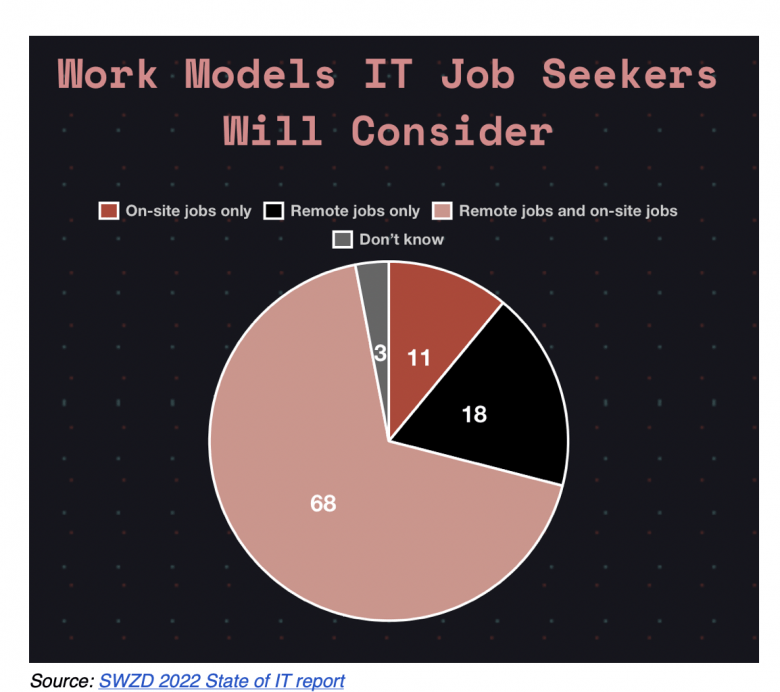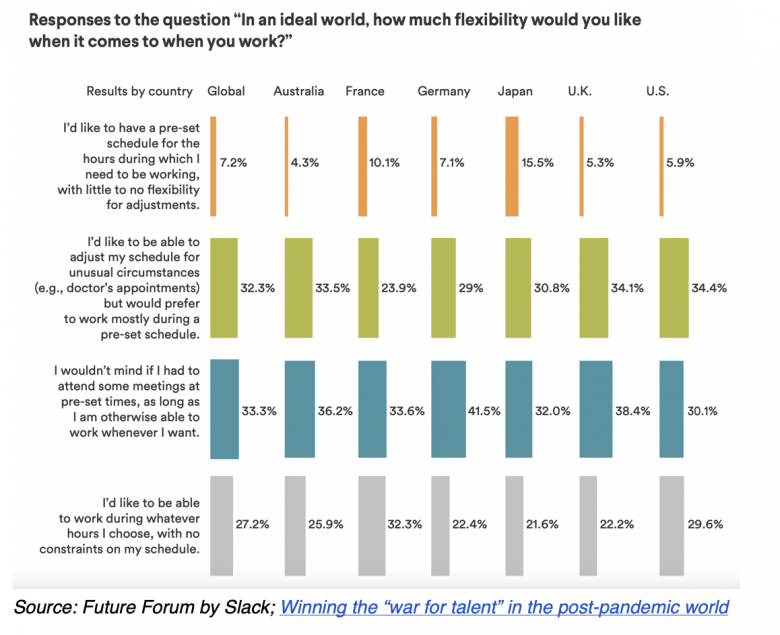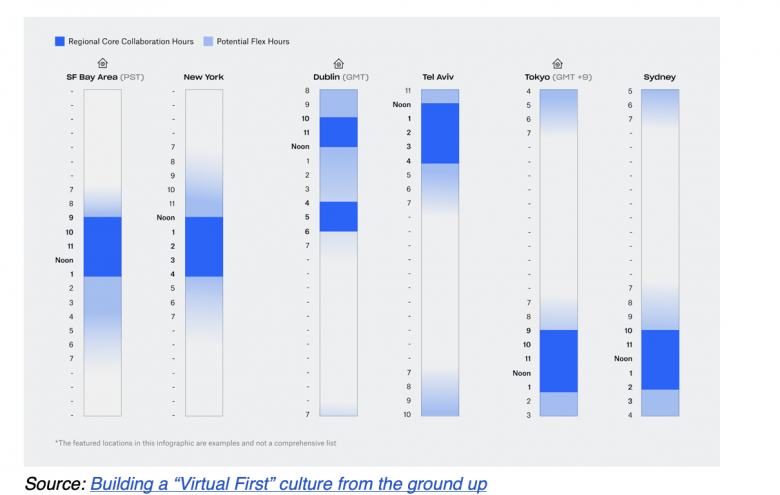摘要: It is psychologically difficult to look for silver linings in an event so destructive to life, liberty and well-being as the COVID crisis, but as we approach the pandemic’s second anniversary it’s becoming clear that IT as a profession has become crucial to every organization.

▲圖片來源:leackstat.com
It is psychologically difficult to look for silver linings in an event so destructive to life, liberty and well-being as the COVID crisis, but as we approach the pandemic’s second anniversary it’s becoming clear that IT as a profession has become crucial to every organization.
Indeed, IT’s response over the past 18 months is often the difference between success and failure. With IT now integral to product, logistics, HR and support strategies, it has put CIOs and other IT executives on par with their business counterparts and created an abundance of career opportunities for IT professionals.
We’ve covered all of these trends at diginomica over the past months, but it is nice to take stock of where IT stands as we enter the fourth quarter and organizations prepare for 2022. Numerous recent surveys and studies provide a mosaic of data points that portray a professional landscape in which IT is central to every organization and critical to competitive differentiation and advantage. Let’s start with a broad perspective before focusing on a few significant trends.
An IT buyer’s perspective of the state of the industry
A noteworthy measure of the future robustness of the IT industry is the Spiceworks Ziff Davis 2022 State of IT survey of European and North American IT purchasers and is released annually in conjunction with the Spiceworld conference. The report is a rosy assessment that shows IT budgets and staffing recovering in 2022 after a rough 18 months of uncertainty, belt-tightening and reactionary change in response to unprecedented world events. Indeed, 53% of respondents expect larger IT budgets next year versus a mere 7% seeing cuts. Similarly, two-in-five will be adding IT staff, primarily to address new projects, security concerns and to serve a growing and increasingly distributed employee population.

I have detailed the implications of the permanent shift to a remote worker class in several recent columns (here, on Zoom's future and this on Google's product updates to address a hybrid workforce). While WFH is great for employees — a growing pile of evidence shows that productivity increases when workers go remote — it creates added work for IT as it modifies network and content distribution architectures that were designed for a captive workforce mostly in tightly-controlled office buildings, as must support a distributed workforce on a shared home wireless LAN using a hodgepodge of home routers, access points and laptops. Another SWZD survey shows the ramifications of remote work on to IT, namely:
- 55%of companies increase IT spending to accommodate the needs of remote employees.
- 59% say support for remote workers is a more important factor when evaluating new products.
- 24%have increased their spending on third-party vendors to support remote workers.
- 72% of respondents say the shift to remote work created additional work for IT.
- 14% will migrate to a cloud help desk, joining the 44% of organizations already using services like Zendesk, Zoho Desk and Freshdesk.
As the last bullet intimates and we at diginomica have been saying for several years, an expanding share of IT's budget is going to cloud and managed services in preference to hardware and installable software. The SWZD shows that 43%of IT spending will be on services next year, up 6 points since 2020. In fact, another SWZD poll found that half of all enterprise workloads will run in the cloud within two years, with 63 percent of IT respondents believing that that cloud deployments are cheaper than self-hosting applications.
An anecdote from the world of golf illustrates the pervasiveness of cloud computing and how cloud services enable innovative data-heavy applications. The Wall Street Journal profiled how the PGA of America, which hosted the recent Ryder Cup matches, has overhauled its IT platforms "to deliver real-time golf scores and stats, live crowd and course maps, and other data services." Its head of technology says the cloud-based system is "is more dependable and offers a wider range of user services than ever before." Indeed, the PGA has gone all-in on the cloud. According to the article (emphasis added):
Over the past four years, he [Kevin Scott of the PGA] shifted all of the organization’s IT systems out of its own data centers and into a third-party cloud service. The move added the ability to scale computing power as needed, while offering both ready-made and customizable software for more advanced capabilities, such as a powerful search engine and artificial intelligence models. 'The cloud is more secure, faster, and stuff doesn’t go down,' Mr. Scott said.
The PGA also took an unconventional approach to staffing its IT projects. Instead of competing for scarce talent with expertise in cloud services and application development, he used freelancers with the skills necessary for a particular project. He said the gig-worker approach reduced the time required to complete a project and cut the average cost in half.
Golden opportunities for IT professionals
Whether opting for freelance life or looking for a traditional position, the post-pandemic era is a great time to be in IT. The SWZD survey found that 30 percent of SMBs and 61 percent of large enterprises expect to add IT employees next year. Hiring organizations will have plenty to choose from since 17% of respondents have shopped around for a new employer in the past year and 14 percent have changed jobs. Overall, the survey finds that "one quarter of the IT workforce expects to look for a new role, change jobs, or switch careers in 2022."
However, the competition for experienced people will be fierce, with a quarter of respondents saying they expect a raise next year. The broad acceptance of remote workers means job seekers will have a much larger pool of potential employers to consider with 86% of IT professionals open to a remote position. Indeed, many IT professionals are done with the office grind with almost one-fifth saying they will only consider remote jobs.

IT professionals are hardly alone in expecting employers to be flexible about work location and hours. A separate Slack-sponsored survey found that more than a quarter of the 10,000-plus respondents prefer to spend little to no time in the office, more than the number that like the daily routine of exclusively in-office work. Furthermore, 30% of respondents in the US and 27% globally want the flexibility "to work during whatever hours I choose, with no constraints on my schedule," with another 30-33 percent saying that a few pre-set meeting times are acceptable, but otherwise want the ability to work whenever they like.

One approach to accommodating the desire for individual flexibility with the need for collective discussion is an approach Dropbox calls:
core collaboration hours, which are four-hour windows for synchronous collaboration, aligned to time zones versus anchoring to physical locations. The intent of this setup is to encourage non-linear workdays where employees gain more control of their time and have more time for things like deep work.

Sadly, aside from the general shift of IT spending to cloud services over installed infrastructure, there is little in the SWZD data on "emerging technology adoption" to indicate that organizations are preparing for a largely remote workforce. Indeed, the top three investment priorities — IT automation, Wi-Fi 6 and IoT — don't address the needs and challenges of a distributed organization. Only priority four, VDI — an ancient technology that has been made mostly obsolete by mobile and browser applications — seems relevant to the hybrid workplace.
My take
The past 18-months have seen IT progressing from reactionary crisis response to a period of uncomfortable equilibrium awaiting a hoped-for return to the status quo that never materialized to today's period of strategic planning for a 'new work order' of cloud-centric operations and applications, distributed workforce and technology-mediated and facilitated business processes. Although the entire episode has been tumultuous, traumatic and replete with extra, unplanned work, IT as a discipline and IT professionals individually have come out much stronger than before.
Exploiting their newfound influence and leverage will require IT executives to act as worthy equals to their C-suite colleagues and focus on applying technology to business problems and revenue generation, not merely minimizing IT overhead and customer complaints. Likewise, IT professionals must earn the locational and temporal flexibility afforded them, by improving and optimizing the remote work technology and processes used by them and their colleagues and mastering their role as developers of technology-centric business services not operators of IT systems.
轉貼自Source: leackstat.com
若喜歡本文,請關注我們的臉書 Please Like our Facebook Page: Big Data In Finance


留下你的回應
以訪客張貼回應